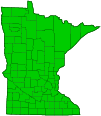field horsetail
(Equisetum arvense)
Conservation • Wetland • Description • Habitat • Ecology • Use • Distribution • Taxonomy
Description |
Field horsetail is an erect, bushy perennial that rises on separate fertile and unfertile stems from long, branched, creeping rhizomes with fleshy tubers. The rhizomes are similar to the aerial stems but are not hollow. They extend to a depth of 40″ or more. The tubers are ¼″ to ½″ in diameter and are arranged singly or in pairs along the rhizomes. Fertile stems are produced in early spring, late April to early May. They are erect, 4″ to 8″ tall, up to ⅓″ in diameter, unbranched, brittle, and succulent. They resemble an asparagus sprout but are brownish because they lack chlorophyll. The leaves are reduced in size, fused together for part of their length, and appressed against the stem, forming a collar-like sheath around the nodes. The sheaths are ½″ to ¾″ long. They have fewer than 14 large, 3 ⁄16″ to ⅜″ long, dark brown to black teeth along the top rim. The teeth may be separate or they may be stuck together, but not fused, into more than 4 small groups. A solitary, spore-bearing cone is borne on a stalk at the end of the stem. The cone is 3 ⁄16″ to 1⅜″ long, circular in cross-section, elliptic in long section, and rounded at the top. It is the same brownish color as the stem the stalk to which it is attached. It is covered with spore-bearing tubercles. The tubercles are darker brown to black with white markings. After the spores are shed the fertile stems die back. Infertile stems are produced in late spring, after the fertile stems have wilted, and die back in the fall. They are erect, 6″ to 24″ tall, 1 ⁄16″ to 3 ⁄16″ in diameter, hollow, and green. The central cavity is about ¼ the diameter of the stem. The stems have 4 to 14 vertical ridges, though they usually have no fewer than 10 ridges. The ridges are rough to the touch but do not have silica deposits. The stems are segmented by up to 20 nodes about 1″ apart. At the top of all but the uppermost segment is an appressed, ring-like sheath. The sheaths are 3 ⁄16″ to ⅜″ long, green, with a narrow black band at the base and wider black band at the tip. At the top rim of the sheath are 4 to 14 brown teeth, the number of teeth equaling the number of stem ridges. The teeth are about 1 ⁄16″ to ⅛″ long. They may be separate but are often fused together at the tip in pairs. They are persistent, remaining after maturity. A whorl of slender branchlets is produced at each node. The branchlets are usually 4-angled, rarely 3-angled, solid, ascending or sometimes horizontal, never drooping, and usually do not themselves branch. Both 3-angled and 4-angled branchlets may occur on the same stem. Like the stems, the branchlets have segments with sheaths. The first segment of each branchlet is longer than the sheath below the node from which it extends. The branchlet sheath has only 3 or 4 teeth along the top rim, the number of teeth equaling the number of branchlet ridges. The teeth taper gradually to a narrow tip. By mid-summer the branchlets may become as long as the stem. |
Height |
Sterile stems 6″ to 24″ Fertile stems 4″ to 8″ |
Similar Species |
Meadow horsetail (Equisetum pratense) has fertile stems that are initially yellowish-brown and unbranching, but then turn green and sprout branches after the spore-producing cones have disappeared. The stems have short, pointed, epidermal projections made of silica. The branches are 3-sided and horizontal to drooping. Woodland horsetail (Equisetum sylvaticum) has branches that are themselves branched. It is the only horsetail in Minnesota with compound branches. The teeth of the leaf sheaths are reddish brown. |
Habitat |
Moist to moderately dry. |
Ecology |
Sporulation |
Late April to early May |
Pests and Diseases |
|
Use |
|
Distribution |
||
|
Sources |
|
| 5/25/2025 | ||
Nativity |
||
Native |
||
Occurrence |
||
Common and widespread |
||
Taxonomy |
|
Kingdom |
|
Division |
Tracheophyta (Vascular Plants) |
Subdivision |
Polypodiophytina |
Class |
Polypodiopsida (ferns) |
Subclass |
Equisetidae (horsetails) |
Order |
Equisetales (horsetails) |
Family |
Equisetaceae (horsetail) |
Genus |
Equisetum (horsetails) |
Subgenus |
Equisetum |
Monotypic genus, family, and order Subgenus Living fossil |
|
Subordinate Taxa |
|
Several varieties and subspecies have been described. World Flora Online recognizes five varieties, GBIF recognizes three subspecies. Catalog of Life recognizes two subspecies. Mosty other sources do not recognize any varieties of subspecies. |
|
Synonyms |
|
Equisetum arvense var. alpestre Equisetum arvense var. boreale Equisetum arvense var. campestre Equisetum arvense var. riparium Equisetum boreale Equisetum calderi Equisetum saxicola |
|
Common Names |
|
The stems are regularly branched, the branches appearing in a whorl at each stem node. This gives the plant the appearance of a horse’s tail, giving rise to the common name “horsetail”. |
|
bottlebrush common horsetail field horsetail foxtail-rush horse pipes horsetail horsetail-fern jointed rush mare’s tail meadow-pine pine-grass pinetop scouring-rush snake grass snake-grass western horsetail |
|
Glossary
Apiculate
Ending in a short, abrupt, flexible point.
Node
The small swelling of the stem from which one or more leaves, branches, or buds originate.
Rhizome
A horizontal, usually underground stem. It serves as a reproductive structure, producing roots below and shoots above at the nodes.
Succulent
Having thick leaves, stems, or roots that store water. Succulent tissues appear fleshy externally and juicy internally.
Tuber
An underground root (as with dahlias) or stem (as with potatoes), thickened by the accumulation of reserved food (usually starch), which serves for food storage and vegetative propagation.
Visitor Photos |
||
Share your photo of this plant. |
||
This button not working for you? |
||
Luciearl |
||
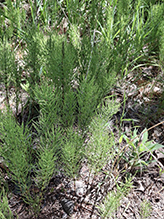 |
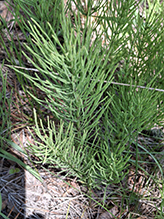 |
|
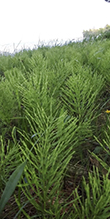 |
||
Not sure if horsetails are a plant or category of themselves. |
|
|
MinnesotaSeasons.com Photos |
||
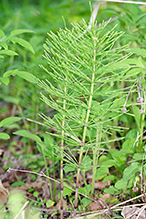 |
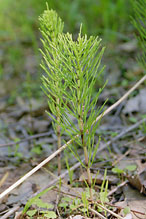 |
|
Infertile shoot |
Infertile shoot |
|
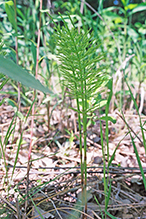 |
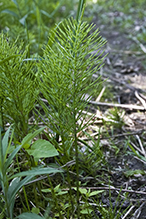 |
|
Infertile shoot |
Infertile shoot |
|
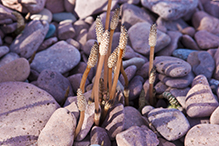 |
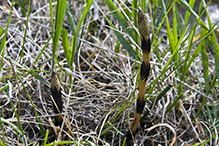 |
|
Fertile shoot |
Fertile shoot |
|
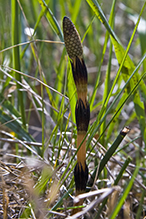 |
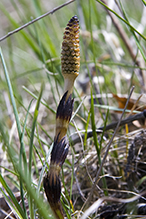 |
|
Fertile shoot |
Fertile shoot |
|
 |
||
Stem |
|

Slideshows |
Equisetum arvense |
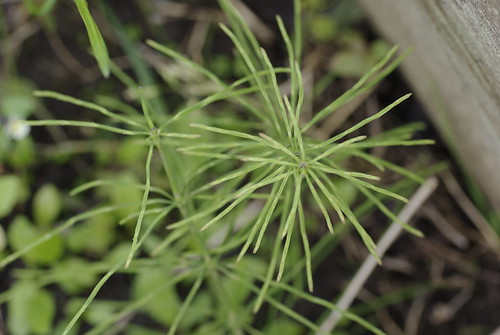
|
About
Åkersnelle, Field Horsetail |
Field Horsetail (Equisetum arvense) |
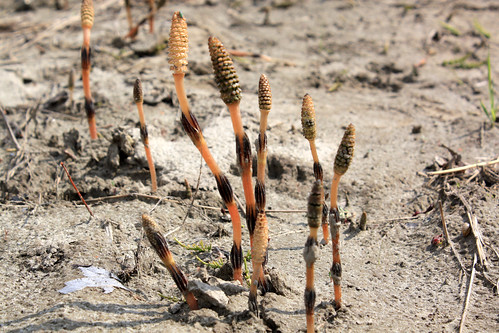
|
Equisetum arvense HORSETAIL |
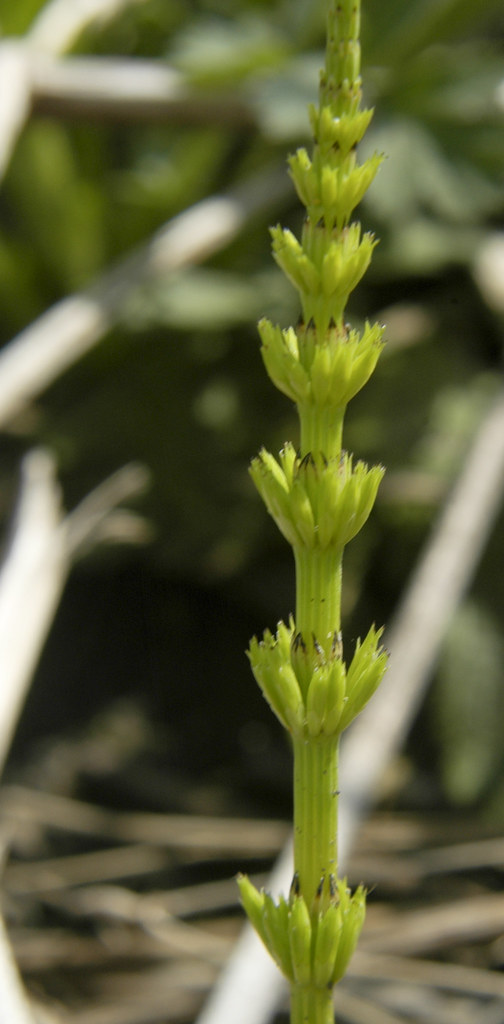
|
Equisetum arvense |
About
Published on May 11, 2013 http://www.pfaf.org/user/Plant.aspx?LatinName=Equisetum+arvense |
Equisetum arvense ( with translation text ) |
About
Published on May 24, 2012 · Plants of future (http://www.pfaf.org/user/Plant.aspx?LatinName=Equisetum+arvense) · GRIN - Taxonomic information (http://www.ars-grin.gov/cgi-bin/npgs/html/tax_search.pl) |

Visitor Videos |
||
Share your video of this plant. |
||
This button not working for you? |
||
|
Other Videos |
||
科学映像館 Equisetum arvense ツクシ・(スギナ) |
About
Uploaded on Sep 8, 2008 撮影・編集 オムニ・サイエンスネット omni/sciencenet ■omni@m2.pbc.ne.jp 配信責・尾高俊夫 ▲科学映像館 Equisetum arvense ツクシ・(スギナ) |
Field Horsetail: Overview |
About
Published on Mar 3, 2014 No description available. |
Field Horsetail / Common horsetail (Equisetum arvense) - 2014-04-22 |
About
Published on Apr 25, 2014 Equisetum arvense, the Field Horsetail or Common Horsetail, is a herbaceous perennial plant. ---------- |

Visitor Sightings |
||
Report a sighting of this plant. |
||
This button not working for you? |
||
Luciearl |
Location: Cass County |
 |
| Luciearl 5/26/2023 |
Location: Lake Shore Not sure if horsetails are a plant or category of themselves. |
 |
MinnesotaSeasons.com Sightings |
||
Avon Hills Forest SNA, North Unit Charles A. Lindbergh State Park Clifton E. French Regional Park Felton Prairie SNA, Bicentennial Unit John Peter Hoffman Spring Brook Valley WMA Margherita Preserve-Audubon Prairie Minnesota Valley NWR, Chaska Unit Minnesota Valley NWR, Rapids Lake Unit Minnesota Valley State Recreation Area, Lawrence Unit Mound Spring Prairie SNA, North Unit Nerstrand Big Woods State Park Northern Tallgrass Prairie NWR, Spieker Unit Northern Tallgrass Prairie NWR, Touch the Sky Prairie Unit P.N. and G.M. Nelson Wildlife Sanctuary Prairie Creek WMA, Koester Prairie Unit Robert Ney Memorial Park Reserve Spring Beauty Northern Hardwoods SNA Verlyn Marth Memorial Prairie SNA |

|
Created: 5/20/2025 Last Updated: © MinnesotaSeasons.com. All rights reserved. |
